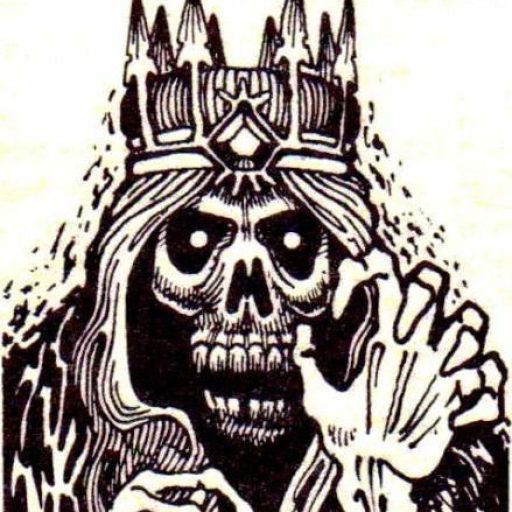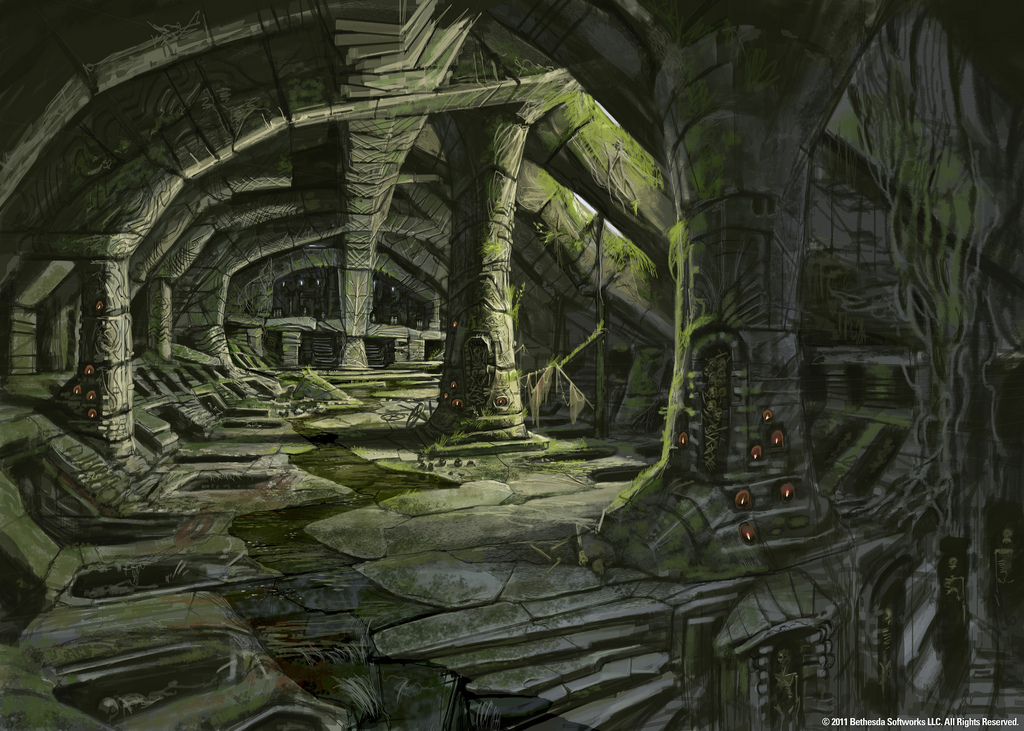Now on to the final part of the adventure preparation. Mapping and stocking the dungeon. This part is probably the simples and less mind taxing of the three parts, and can actually be the most of part as well, in my experience. Personally, I love pulling out the graph paper and start doodling up a map, big inspiration is Dyson Logo and old school modules. Previously I would map out a dungeon with no aid of any sort however there are many ways to go about and map out a dungeon.
How Do I Map a Dungeon?

The simplest way, is to just grab a pencil and graph paper and start drawing squares connected by doors and corridors. However perhaps you don’t have the time or you use a VTT and like showing off maps to your friends. If you want a nice map to show off, my recommendation is Dungeon Scrawl, a web browser based dungeon creator. Its easy to use and has a few styles to try to make your dungeon visually appealing.
No time to actually draw a map, then you also have a couple of options. You can always find nice dungeon maps from Reddit, but they aren’t sprawling enough for my taste. This is where i come in and recommend Dyson Logos, who has an amazing selection of maps with an incredible style and varying in length and size. However if his maps aren’t sprawling enough, or you want something even more old school in design, there is also Donjon AD&D Random Dungeon Generator which comes in a variety of styles, options for generation and compatibility with Dungeon Scrawl to add or change something you want with a specific map, also comes with a cavern map generator, always useful!
But if you are like me, and prefer drawing up a dungeon on graph paper but still want a little bit of aid, the AD&D DMG Appendix A is my tool of choice! always providing large, interconnecting and sprawling maps that look interesting to look at as a DM and weird and isosteric to map for your friends haha! If you are not interested in the AD&D DMG or the core books, you can also use OSRIC dungeon generator which is free to download. There is also an Appendix A in the 5e DMG although i am biased in my preference for AD&D Appendix A
No matter what you use, you’ll need to create a map for your dungeon, it doesn’t need to be always a sprawling maze of confusing underworld horror, if you prefer something more focused you can always draw up a 5 room dungeon. However regardless if a large dungeon with 3 dozen rooms or smaller, just like Gygax I advise you to create more than 2 levels. Gygax said 6 levels, I say 3 levels; the number is arbitrary and yes even one level is enough, however creating more than one level will give your players a challenge that they can tackle for multiple sessions, a dungeon you made in a weekend can take your players maybe 3 or 4 weeks to finish. This is 3 to 4 weeks of free time! Enough to relax and forget about the game for a bit, or focus on other aspects of the game like world building. In my case, I create even more adventures while my players are still busy tackling one I already made; while they are busy with one dungeon by the time they are done, you have created perhaps 2 or 3 more dungeons or adventures for your players to find in your world and explore at their own pace.
Stocking the Dungeon.

Now we’re on to the final part, stocking the dungeon, where all our works comes together. Here we will use what we thought up during Part 1 and Part 2, our concept and brainstorm. First we place our independent traps, special, tricks, treasure and monsters, along with the necessary context for these things. Our keys for these places can have any detail you like, monster lairs with weapon racks and ale barrels in their lair; rooms with corpses of half melted men and elves who are near strange and throbbing mushrooms; a large chamber with a caged fight pit where the previous owners used to entertain themselves and bet gold on their fighters, just like Conan! After you place the main attractions of the dungeon per say, now we need to fill up the rest of the rooms and we can do this randomly.
To stock randomly none important rooms, there are many ways to go about this either by your own fiat, or by using tools such as B/X 1d6 ransoming dungeon stocking (also available in the OSE SRD website) or using AD&D Appendix A which also has a table to roll on for room contents (Also available in the OSRIC pdf) roll on this, fudge it if you dont like the results and stock up that dungeon.
Keying the Dungeon.

Now to close up this guide, and finish our dungeon, we need to key our rooms. If you’ve played any of the recent modules, most have a box text to read out loud to your players; this isn’t a new thing as we also see this as far back as AD&D modules. However these box text all have the same issue, too much stuff. They can be lengthy and overly flowery with their description, and if they are too long, your players will become bored as you spend the next 3-5 minutes, reading the text, reading the text out loud, and then fumbling to answer your players question because the information below the text box for DM is overly explained and doesn’t go straight to the point. Don’t do this. You are not writing a module for others to read you are writing a key to give you the necessary and important information about your dungeon. Usually my keys are one to two sentence long, quick descriptions. for example:
Monster w/ TT: Decrepit, hanging cobweb, Cocoons; humanoid size, hanging on walls. 3 Giant Spiders on the ceilings, Cocoons hold a total of 150gp.
With a key like this I know exactly what’s in it and have key word to flower up and describe with more flare during actual play. Besides what’s inside this room, besides what is in the key, you will also give more information such as dimensions of the rooms, number of exits, and locations of these exits if you play with an actual mapper.
Its also important to add at the beginning of your Key right before writing down the information of the rooms, details about the ceilings, walls, floors, air quality and smell. These will add to the dungeon exploration if used.
Now our key should look something like this:
Collapsing keep of the Scarlet Princess:
Dungeon details
Walls: Brick and Mortar walls, stone seems covered in red rust like substance, mold and red fungi. The walls have Dwarven carvings such as symbols and runes for decor.
Ceiling: Vaulted ceilings, with stone beams. unless stated otherwise the ceiling is 10ft tall.
Floor: Stone tile floor. each tile style is carved with dwarven details and runes
Air quality: Damp
Smell: earthy and putrid.
Dungeon Keys:
- Empty: Chamber, cracks on the ceiling, corpse being eaten away and covered in red fungi.
- Monster w/ TT: Decrepit, hanging cobweb, Cocoons; humanoid size, hanging on walls. 3 Giant Spiders on the ceilings, Cocoons hold a total of 150gp.
- ….
- …
And now you are done, your very own dungeon. A place full of mystery and tension that will provide hours of fun to you and your friends. I hope this guide will come to be useful to someone. Perhaps even one of my friends, who is a dungeon master himself yet seems rather burnt out. I just want to close out this series with the hope this gives DMs new and old an idea on how a dungeon can be built and how other peoples notes look and such.
Introduction
Part 1: The Concept
Part 2: Brainstorming
Part 3: Mapping and Stocking the Dungeon.

